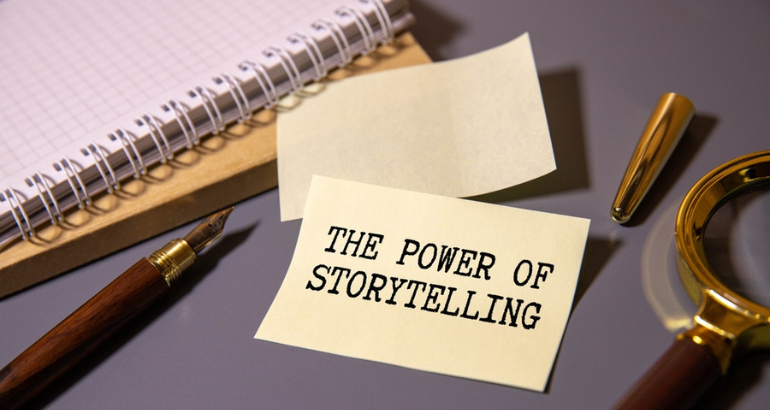In the fast-paced world of marketing, capturing and retaining your audience’s attention is no small feat. As brands vie for the spotlight, storytelling emerges as a powerful tool to create connections and leave lasting impressions. But why do people remember stories more than facts or figures? Let’s delve into the psychology behind storytelling and explore its applications in marketing.
The Psychology of Storytelling: How Our Brains Are Wired for Stories
From ancient cave paintings to bedtime tales, storytelling is a fundamental part of human culture. Our brains are naturally drawn to stories because they engage both the logical and emotional centers of our minds. Unlike plain data, which activates only the language-processing areas, stories activate sensory and emotional regions, making the experience immersive.
When we hear a story, we not only process the information but also imagine ourselves within it. This phenomenon, known as narrative transportation, allows us to empathize with the characters and internalize the message. As a result, stories are more memorable than isolated facts or statistics.
Why Stories Resonate: Emotional Connection and Relatability
Stories evoke emotions, and emotions are key drivers of memory. Research shows that people are more likely to remember information tied to an emotional experience. A touching story about a brand’s journey or a customer’s success can make a deeper impact than a simple ad.
Additionally, relatable stories create a sense of connection. When audiences see themselves in a story—whether it’s a shared struggle, aspiration, or value—they are more likely to trust and engage with the brand. This relatability fosters loyalty and encourages word-of-mouth advocacy.
Storytelling in Action: Examples of Successful Campaigns
Nike’s “Just Do It” Campaign
Nike’s marketing success lies in its ability to tell stories that inspire. Their „Just Do It“ campaign isn’t just about selling shoes; it’s about celebrating human potential. Stories of athletes overcoming challenges resonate deeply with audiences, creating an emotional bond with the brand.
Coca-Cola’s Holiday Campaigns
Coca-Cola’s heartwarming holiday ads are a masterclass in storytelling. By associating their product with family, joy, and togetherness, the brand creates memorable emotional experiences that transcend the product itself.
How to Incorporate Storytelling in Your Marketing Strategy
1. Know Your Audience
The foundation of effective storytelling is understanding your audience’s needs, values, and aspirations. Conduct thorough research to uncover what resonates with them and tailor your narratives accordingly.
2. Create a Hero’s Journey
Every great story has a hero, a challenge, and a resolution. Position your customer as the hero, your product or service as the guide, and the problem they face as the challenge. This framework helps customers see how your brand fits into their lives.
3. Evoke Emotions
Focus on crafting narratives that tap into universal emotions like joy, fear, hope, or love. Emotional storytelling not only captures attention but also fosters long-term connections.
4. Use Visuals and Multimedia
A picture is worth a thousand words, and a video is worth even more. Combine compelling visuals with your narrative to enhance its impact. Multimedia elements make stories more engaging and shareable.
5. Be Authentic
Audiences can spot inauthenticity from a mile away. Ensure your stories are genuine and align with your brand’s values. Authenticity builds trust and credibility.
The Benefits of Storytelling in Marketing
1. Increased Brand Recall
Stories stick in the mind far better than isolated facts. By embedding your brand’s message within a story, you make it easier for customers to remember you.
2. Enhanced Customer Engagement
Engaging stories captivate your audience and encourage interaction, whether through likes, shares, or comments. This engagement boosts your brand’s visibility and reach.
3. Stronger Emotional Connections
When customers feel emotionally connected to your brand, they’re more likely to become loyal advocates. Storytelling helps build these connections by fostering empathy and understanding.
4. Improved Conversion Rates
Stories that illustrate how your product or service solves a problem can drive conversions. When customers see the tangible benefits through relatable narratives, they’re more inclined to make a purchase.
Conclusion: Make Stories Your Marketing Superpower
In a world flooded with information, stories are the lifeline that keeps brands memorable and meaningful. By harnessing the power of storytelling, you can create authentic connections, evoke emotions, and leave a lasting impression on your audience. Remember, it’s not just about selling a product; it’s about crafting a narrative that resonates.
Start weaving stories into your marketing strategy today, and watch your brand’s influence grow.








